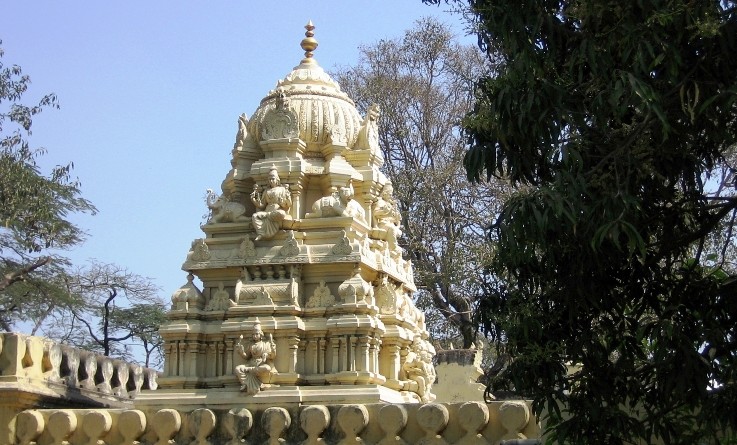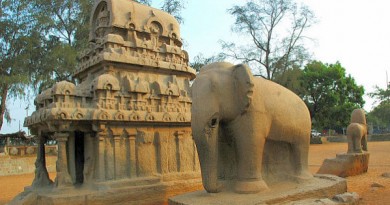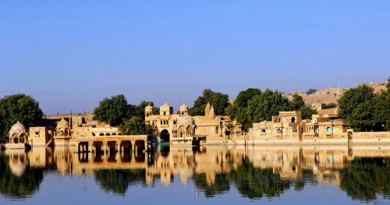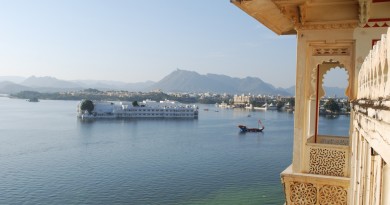Bangalore in India
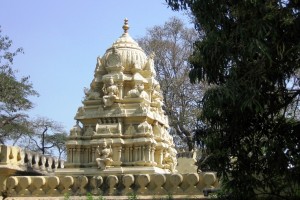 The emergence of a city Bangalore associated with an ancient legend that tells of how an ordinary peasant woman saved from starvation Indian king of Vijayanagar, feed him beans. The grateful monarch is called the settlement “the village of boiled beans”, as translated from the local dialect phrase “Bangalore”.
The emergence of a city Bangalore associated with an ancient legend that tells of how an ordinary peasant woman saved from starvation Indian king of Vijayanagar, feed him beans. The grateful monarch is called the settlement “the village of boiled beans”, as translated from the local dialect phrase “Bangalore”.
In the days of old gray in turn gave way to the modern city of two common religions – Hinduism and Islam. Such processes are in full effect on the further development and a culture. The formal appearance of the city was marked by the erection of the temple Nandi and clay fortress in the 30s XVI century. The latter became the mainstay and major defense facilities in Bangalore, which consisted at first of several long streets and squares.
The Doddapete area is one of the first sights retained its popularity to this day. Since then, each successive heir to the throne to contribute to the building of the city, adding new elements of structure and superstructure. Since the middle of XVI century, local government has consistently changed since Bangalore has been a continuing goal to win many invaders. Therefore, in 1638, overthrew the emperor, his throne was occupied by Muslim Bijapur, commander, received as a gift for the city won a military campaign.
However, his reign did not continue long. And soon, as a result of another war of aggression Sultan of Bijapur was driven by Mongolian troops. But the Mongols long stayed in power. True, by choice of the Mongols, the city was again returned to the hands of an Indian royal dynasty for a large ransom. After more than a century of staying on top of the dynasty was overthrown by the British invaders at the turn of the XIX and XX centuries. Heir to the throne of Tipu Sultan was killed in the war. From that time until independence power was concentrated under the influence of the British Crown.
During its existence as a city, Bangalore, besides the permanent warrior has survived many difficulties. Indeed tragedy was raging here in the late nineteenth terrible disease – Plague. A terrible epidemic took the lives of millions of people, reduce the population several times. As a result, there have been irreversible processes in the life of citizens by changing the internal situation and dividing the city into several parts. After the proclamation of the independence of India in 1947, the city acquired the status of an administrative center.
Bangalore is a city which is not particularly welcome to outsiders. Since the time of acquisition of Independence, the city is controlled by local forces. Since the time of the formation of the Indian state as a free republic in these places that a rapid development of high technology and industrial computers. Every day open more and more research centers and laboratories working on the creation of computer programs and the development of new Internet technologies. Since Bangalore is considered one of the most highly industrialized cities in India sense, imitating many Western European, U.S. and Canadian industrial center. Besides high technologies are also developing other sectors of the economy. Such as metallurgy, nuclear industry, etc.
In this connection, in the city operates many factories and businesses, bringing the budget to the treasury important contribution. Meanwhile, with the development of the industry is deteriorating ecological situation. The air contains large amounts of toxic fumes and chadnyh is several times higher than the norm, and tap water is of very low quality and may contain hazardous substances. Reducing the number of green areas and trees only exacerbates this situation. In addition to advances in traditional industries, Bangalore can boast of a certain number of attractions that are in the ground and attract tourists to the city is not entirely open.
The first of them can be identified Tavakkal Mastan. Burial Indian saint each year is visited by thousands of Muslims, as well as representatives of other world religion. The main influx of people here observed during the traditional festival of Karaga. Following further, I want to mention a few words Tippu Palace, Castle, named after the Sultan, who led its construction. A distinctive feature – all rooms in the building are made of wood with the use of the art of carving. Near the mosque is located near the palace and defense fort that served Tippu Sultan.
To the subject of admiration and pride include the Friday Mosque, the oldest church in the city. The temple is decorated in a typical oriental style: a lot of drawings, pictures, paintings and frescoes and stained glass windows. The walls of old buildings made of solid granite. Very interesting place is the Bull Temple. This church – a place of worship of the local peasants carved granite 20 meters Bull figure, which is a symbol of a good harvest here. During the gathering of first fruits, the villagers have a few pieces of the sacrifice of thanks for god enough or in the hope of better results in the coming year. Looks wonderful monument “Statue of Shiva” many-particularly the figure of a mysterious and majestic looks in the dark.
One of the many treasures of the natural foundation of the city – Garden LaBagh. The founder of the reserve was Hyder Ali, zavezshy first species. His case was continued by his son, augmenting the collection of new varieties of plants. Now Gardens – one of the most beautiful attractions in Bangalore, which attracts crowds of tourists. Definitely worth visiting Kubbon Park. The reserve was founded in the mid-twentieth century, covers an area of several hundred acres. The park is home to wild animals and birds imported from other countries. Brightest representatives – monkeys, spotted deer, horses, gazelles, wild boar and many others. Beautiful lake Ulsur is a favorite tourist destination. Rent a boat, you can take a small cruise on the islands of the reservoir, as well as to capture on film the wonderful scenery.
The geographical position is in the highlands, through which the city has a mild climate and lack of extreme temperatures. This fact will be of interest to travelers who can not tolerate extreme heat for health reasons. In the summer months, there is no great heat, and in the winter you do not feel the influence of cold winds. Rains mostly in the summer and autumn, and sometimes are heavy showers with thunder and hail. On the amount of precipitation have a direct effect of wind towards the ocean. The visitors to Bangalore first thing striking numerous gardens and parks, with gorgeous greenery and colorful flowers. Sometimes, if you look from a distance, to the flower beds, the imagination can provide a bright, colorful picture. Green spaces – the main pride of the citizens.
With the extensive development of the industry and its negative impact on the environment, gardens as well as possible, act as a filter, clean the air. In addition, they themselves are masterpieces of aesthetic and decorative arts. In the creation of gardens participated the thousands of caring and capable hands. Parks – a popular place for recreation and leisure activities for adults and children. Numerous playgrounds, stadiums and fields, which has most of the parks, always packed with people. The weekend couples picnics on the grass or on separate clearings. During national holidays, the largest city parks parades, various festivals and music competitions, collecting thousands of spectators. On the area of the square there are hundreds of stalls, souvenir shops and stalls selling souvenirs and trinkets.
In the city there are many educational institutions: universities, institutes, academies, colleges, high schools, colleges, and others. Because of this, for its fame Bangalore student center. Dozens of different high schools taught thousands of students from all over the country, and from far and near abroad. Some universities take part in international programs, training of practitioners to exchange best students in the best foreign analogues. Library of the oldest universities contain rare and rare books and manuscripts, is of great value to science in India. Many well-known teachers and scholars gave cities. Often hosts a variety of student competitions, festivals, competitions, sports and the Olympics. Active city parliament university students. Bangalore has two conditional half. The first – a rich, which is beset by order and cleanliness.
The local people of different affability and kindness. On the streets of any counter easy answers to your questions and help you find a particular place. Shop assistants and staff at hotels, restaurants, and other establishments have high levels of skill and enviable schooled. And, as an alternative, a poor half, with dilapidated shacks and dirty rough roads. By the way, the last part of the tour is better not to attend. Since you can meet hostility and contempt of the inhabitants of the local area who are burdened with their problems. In the eye catches a partial or complete lack of civilization. In addition, the “poor” streets thrive theft and petty theft, begging, and fraud.
In urban buildings mostly found low buildings. Maximum – three or four floors. High-rise structures are extremely rare. As in other cities in India, Bangalore is thriving trade. On numerous markets we offer a large variety of items that necessarily know where to look. Of the most popular things for tourists include jewelry and souvenirs made of mahogany, and various animal figures, elaborately made of clay, wood, metal.
Another nice factor that is particularly useful for the attention of visitors – low prices on almost any type of product, in the markets and in supermarkets. Overshadow the overall positive impression of Bangalore are dirty and neglected streets, squares, boulevards poor areas. A large amount of garbage in public places like that of India – a country which is under development, and it will take more than a year, the local authorities have put here in order. Still, the overall result of the visit to Bangalore will be positive.
As for the rules of behavior, there is once again reminded of the religious traditions of the local population and especially communication. Also, do not want to photograph the interior of churches, mosques and clerics who are in them. Never shoot and penetrate the secret military and strategic targets, which is what the military units, ports, offices of companies engaged in the development of nuclear programs, nuclear power plants, etc.
Selecting the object of visiting Bangalore, the tourist will be satisfied with what they saw and get detailed information about the history of the city and the main events taking place on its territory, examining the major destinations. The guests may also be interested building computer companies and the research laboratory. Numerous factories will create the impression of a man of the city, as the industrial giant.

